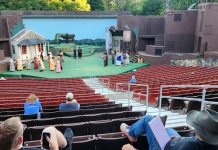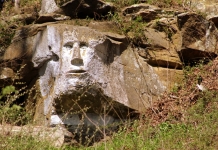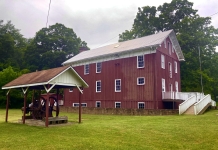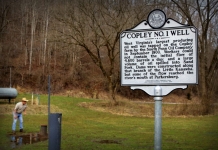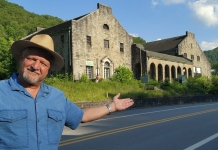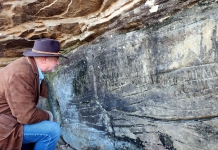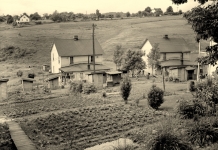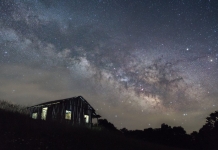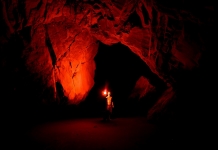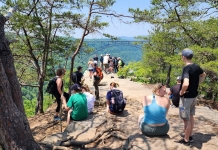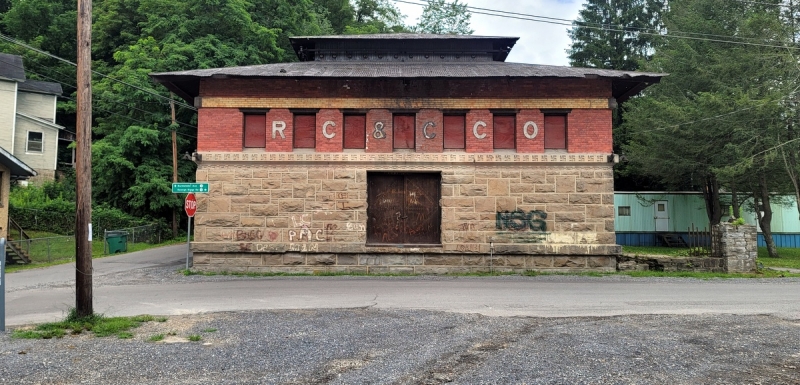
Built in 1906, the Raleigh Coal & Coal Co. Powerhouse at Raleigh, near Beckley, West Virginia, has been determined to be eligible for inclusion on the National Register of Historic Places.
The powerhouse was among the first principal buildings built by the Raleigh Coal & Coke Company at Raleigh, a company-owned community established in 1898 to house employees and their families in central Raleigh County. The company opened six mines and swiftly became one of the state's chief coal producers, marketing coal under the trade name "Black Knight Coal."
By the late 1920s, the population of Raleigh had outpaced that of Beckley, and the company had become so successful that its officers organized the Black Knight Country Club, which featured a clubhouse, tennis courts, and a golf course raised on a hill above the town. Its successful officials and other investors built sizeable homes around the clubhouse.
The powerhouse building was designed to distribute electric power to mines, residences, and company-owned buildings throughout the community. However, its design also incorporated ornate architectural features that elevate the building above that of a merely practical structure. The powerhouse was the nerve center of the company and town.
Exterior
The design of the building is more ornate than other industrial buildings in the region. It incorporates varied surface ornamentation, including red and yellow brick and uncoursed, rusticated stone. A band of molded concrete, a water table between its first and second stories, includes a swastika symbol that has attracted the attention of passersby for generations. However, the building was built long before the symbol gained a negative association.
The first story and foundation are built of large blocks of rusticated sandstone block likely quarried in the area. The four sides of the first story are punctuated with double doors of iron. The first floor is approximately 10 feet high, and the second story is of like height. Each exterior wall is approximately 45 feet wide and 20 feet high.
The second story above the ornamented water table is built principally of red and yellow brick punctuated by windows, seven per side, inset with steel, approximately three feet wide by six feet high. Metal letters commemorating the Raleigh Coal & Coke Company are affixed to the wall spaces between the windows—RC&CCO.
The roof above the lower stories is hipped and of corrugated metal. It rises in two tiers 14 feet above its base from the top of the building's second story. The roof is divided between its top and lower tiers by a course approximately one foot high through which a range of lower voltage transmission lines extended outward to the town and mines. The ceramic-insulated holes through which the lines passed remain in place. A range of high-voltage transformers was installed on the patio of stone that flanks the northwest face of the building but was removed when the power was decommissioned as a power source in the 1950s.
Interior
The interior of the building consists chiefly of a single two-story space, 40 feet wide by 40 feet across and approximately 20 feet high. It opens above into an attic area, which extends upward another 14 feet above a network of rafters. The ground floor has been subdivided into a large room (approximately 40 feet long and 27 feet wide) and two smaller rooms.
The larger room may have contained electrical equipment, and its floor is paved in hexagonal tiles. The unfinished floors of either of the smaller rooms are two feet below the floor of the larger room. The historical function is presently undefined. A working carriage rail used to lift and drop transformers remains in place and runs the length of the larger room.
Since the 1950s, the building has been used chiefly as a workshop and warehouse, its use facilitated by four doorways positioned at the center of each wall. Three of the doorways are approximately nine feet wide by 7.5 feet tall. A fourth is approximately 11 feet wide by 7.5 feet tall.

